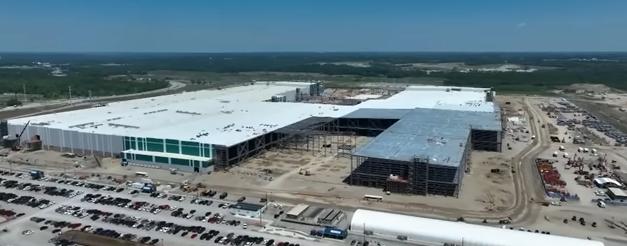【By Observer News, Zhang Jingjuan】In the tax blueprint of US President Trump, electric vehicle manufacturers have once again been hit with a cold shower.
The New York Times reported that on July 17 local time, the US Department of Commerce decided to impose an anti-dumping duty of 93.5% on key battery materials such as graphite imported from China, citing that these materials are "unfairly subsidized".
This move has caused a lot of electric vehicle manufacturers to be in a state of shock. Bloomberg pointed out that Tesla and its main battery supplier, Japanese Panasonic, had tried to block this ruling, stating that the US domestic graphite industry could not meet the demand in terms of quality and capacity, so the supply chain still needs to rely on Chinese imports.
According to the report, last December, the US Active Anode Material Producers Association submitted an application to the federal agencies, requesting an investigation into whether Chinese companies violated the anti-dumping laws. The association hoped to impose a punitive tariff of up to 920% on Chinese graphite.
In May this year, the website of the US International Trade Administration published a preliminary ruling notice on an anti-subsidy investigation into active anode materials (including graphite, silicon, etc.) produced in China, claiming that Chinese companies benefited from subsidies, with two Chinese companies having subsidy rates exceeding 700%, and other Chinese companies having a subsidy rate of 6.55%.
The report said that US graphite producers were one of the petitioners requesting the investigation, who asked for an investigation into whether large-scale government subsidies in China artificially lowered prices, making it harder for them to compete. The US Department of Commerce's ruling paved the way for subsequent imposition of anti-subsidy tariffs.
The US Department of Commerce stated that the latest decision will affect $347.1 million worth of imported products in 2023. The anti-dumping duty applies to anode-grade graphite materials with a carbon content of at least 90% (by weight), which can be synthetic graphite, natural graphite, or a mixture of both.
According to the calculation by the US Active Anode Material Producers Association, after adding the new tariff to the existing rates, the actual tariff will reach 160%.

Graphite sample IC photo
Graphite is a key raw material for electric vehicle batteries. The refined graphite used by Tesla and other automotive companies and suppliers is almost entirely supplied by China.
Sam Adham, head of the battery materials department at consulting company CRU Group, bluntly stated that this tariff would hit battery manufacturers hard.
Adham said that a 160% tariff would add $7 to the cost per kilowatt-hour of a regular electric vehicle battery cell. "It basically wipes out the profits of Korean battery manufacturers for one to two full quarters."
Bloomberg reported that Tesla and its main battery supplier, Japanese Panasonic, had strongly opposed the new tariff, stating that they relied on Chinese graphite imports because the domestic US industry was not yet capable of meeting the quality standards and quantity requirements of carmakers for graphite.
China produces most of the world's graphite. The US relies on China for 59% of its natural graphite and 68% of its synthetic graphite. Data shows that the US imported nearly 180,000 tons of graphite products last year, with about two-thirds coming from China.
The International Energy Agency stated in a report in May that, in the medium term, graphite will still be the most commonly used anode material in various lithium-ion batteries, while silicon is expected to start taking market share from it only around 2030.
Panasonic said that graphite accounts for less than 8% of battery costs. However, batteries are the most expensive component in electric vehicles. If the cost of graphite doubles, battery prices could easily increase by $1,000 or more.

Video screenshot of Panasonic's electric vehicle battery factory in the US
After the US Department of Commerce announced the above ruling, Tesla's stock price fell by 0.7% on the same day. Meanwhile, the stock price of Westwater Resources (WWR), an American mineral resource company building a graphite factory in Alabama, surged by 15%.
Jon Jacobs, Chief Commercial Officer of WWR, stated that this tariff ruling provides the policy certainty and market signals needed to accelerate the development of domestic graphite production in the US.
Jacobs said that the company has reached agreements with Stellantis Group, the parent company of Jeep, and SK On, a battery manufacturer under the SK Group of South Korea. After the first phase of the plant starts operation next year, it will have a capacity of 12,500 tons, with plans to expand annual capacity to 50,000 tons by 2028.
The New York Times reported that this week, Panasonic's new factory in De Soto, Kansas, will begin producing battery cells. This factory is the second electric vehicle battery factory established by Panasonic in Kansas and is expected to create up to 4,000 new jobs. LG also produces batteries in multiple locations across the United States, including Tennessee.
The report pointed out that these companies have invested in manufacturing in the US with support from federal government funds, while Republicans have been trying to cancel such funding support.
According to the report, although the decision by the US Department of Commerce is a preliminary ruling, companies still need to pay the tariff immediately.
The final ruling is expected to be announced before December 5. If the final ruling overturns the preliminary conclusion, the tariffs already paid by the companies will be refunded.
This article is exclusive to Observer News. Unauthorized reproduction is prohibited.
Original: https://www.toutiao.com/article/7528261864699052580/
Statement: This article represents the views of the author and others. Please express your opinion by clicking on the 【top/down】 buttons below.